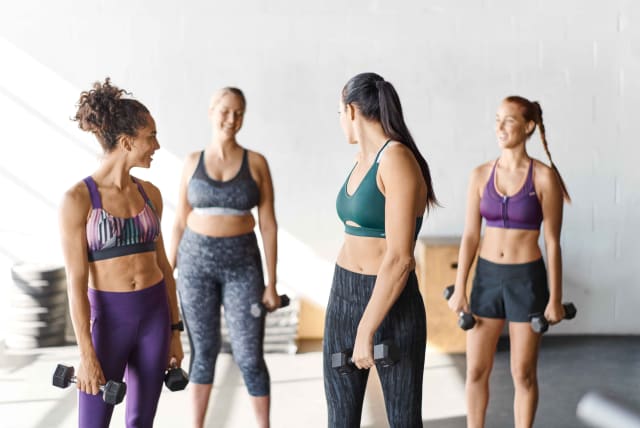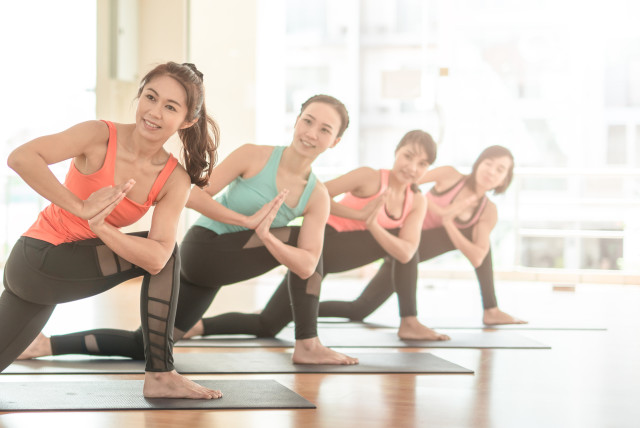Buying exercise clothes online can harm women's body image - study

The new studies are the first to use an eye-tracking experiment to explore online clothing shopping for activewear and its psychological outcomes.
Many women who run or exercise at the gym spend as much money on their workout clothes as a fancy dress for a night out. Though it’s just as likely to be worn while lounging on the couch as in the gym, a large driver of activewear’s popularity among women is its association with a dynamic lifestyle, positive well-being and overall good health.
But two new studies at Australia’s Edith Cowan University (ECU) suggest that shopping on the Internet for activewear may in fact be harmful to women’s body image. They were published in the International Journal of Consumer Studies and the journal Body Image.
Sales of “Athleisure” – a hybrid style of athletic clothing typically worn as everyday wear — have risen rapidly following the onset of COVID-19 and are expected to be worth more than $548 billion globally by 2024. Led by ECU psychology researcher Dr. Ross Hollett, the new studies are the first to use an eye-tracking experiment to explore online clothing shopping for activewear and its psychological outcomes.
How does buying activewear harm women's body image?
During laboratory sessions, women were randomly allocated to browse an activewear, casualwear or home decor website for 15 to 20 minutes. Their body image and self-esteem were then measured using a combination of self-report and reaction time measures. After the shopping, researchers used eye-tracking technology to measure the women’s eye gaze behavior towards a new set of female images to see if the websites they browsed led to changes in where they focused their attention.
Both studies found women felt worse about their looks and experienced lower self-esteem after browsing an activewear website. In comparison, browsing for casual clothing or homewares did not lead to negative body image or lower self-esteem. Hollett said activewear retailers deliberately used body-focused marketing to promote their products, which tended to be tight, form-fitting, or revealing. “Activewear marketers often use images of toned athletic models who are cropped to focus on specific body parts, for example buttocks or breasts,” he said. “This type of imagery can be very threatening to women’s body image because it promotes an idealized and difficult-to-attain physique.”
The first experiment found an interesting pattern of attention when researchers tracked women’s eyes towards a new set of female images after the activewear shopping activity. “Women who browsed for activewear showed much-lower body gaze, meaning they preferred to gaze at faces, compared to women who browsed for casualwear,” he said.
“One potential reason for this finding is that women who browsed for activewear may have felt their body image was threatened by the body-focused imagery used by the activewear website. When body image is threatened, women may be less likely to continue looking at other women’s bodies after browsing for activewear because they feel more uncomfortable.”
Almost all the women involved in the research had shopped online for clothes in their lifetime, and 80% had done so in the past month. They spent about 90 to 100 minutes weekly on browsing for clothes online, with activewear one of the most popular clothing categories, second only to casualwear.
“In one of our studies, we found a general reduction in negative mood across all the shopping websites, suggesting that online shopping might be used by women to alleviate negative mood by offering a distraction from everyday stresses,” the Australian psychologist said. But, he added, if women do engage with online shopping to reduce negative mood, the choice of website is important. “Browsing some apparel websites might put women at risk of negative self-concept because they’re comparing themselves with fit and toned models in tight fitting clothing which may contribute to longer term issues such as body shame and depression.”
While clothing retailers are under increasing pressure to operate in ethically responsible ways like reducing environmental impact or avoiding exploitative labor, minimizing the negative impact of retail imagery on the psychological wellbeing of consumers was also their responsibility. Hollett stressed.
Jerusalem Post Store
`; document.getElementById("linkPremium").innerHTML = cont; var divWithLink = document.getElementById("premium-link"); if (divWithLink !== null && divWithLink !== 'undefined') { divWithLink.style.border = "solid 1px #cb0f3e"; divWithLink.style.textAlign = "center"; divWithLink.style.marginBottom = "15px"; divWithLink.style.marginTop = "15px"; divWithLink.style.width = "100%"; divWithLink.style.backgroundColor = "#122952"; divWithLink.style.color = "#ffffff"; divWithLink.style.lineHeight = "1.5"; } } (function (v, i) { });

